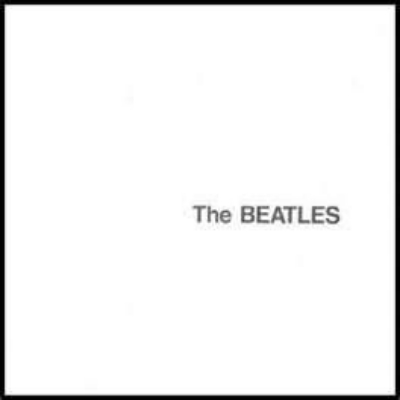Music-versary: The Beatles’ ‘White Album’ was released November 25, 1968
Credits: John Lennon (Guitar, vocals); Paul McCartney (Bass, vocals); George Harrison (Guitar, vocals); Ringo Starr (Drums, vocals)
Backstory: Better known as the White Album for its stark, simple cover art, the Beatle’s double, self-titled LP can be seen as the musical peak for the band that helped define the 1960s—but also the beginning of the end for them.
In February 1968, the band took a trip India to the Maharishi Mahesh Yogi’s Transcendental Meditation Retreat, along with some famous friends like Donovan, Mike Love, and Mia Farrow. There, they were able to all spend time reconnecting with themselves and their art, each writing numerous songs in the process. George, in particular, was coming into his own, though as musicologist Walter Everett later noted, he was quiet about this fact, and was “privately prolific.”
There was more than just a musical disconnect, though. John had taken up with avant-garde artist Yoko Ono, and John’s reverence for her opinions, along with her new presence in the studio (and John’s burgeoning heroin addiction) drove a wedge between him and his erstwhile closest partners. George was quickly finding himself, jamming with his good friend, Cream guitarist Eric Clapton. Paul was trying to keep the band together—even writing Hey Jude for Lennon’s son, Julian—and Ringo was so fed up with the outfit that he quit for a few days. But the final album was, if disjointed, a masterpiece, running the gamut from rock and roll (Back in the U.S.S.R) to folk (Blackbird) to guitar spiritual (While My Guitar Gently Weeps) to a kind of distorted screech (Revolution 9) that predicted the metal days to come. As Lester Bangs would later put it, the result of the sessions would be “the first album by The Beatles or in the history of rock by four solo artist in one band.”
Rumors: In 1967, a rumor began going around that Paul McCarney had been killed in 1966 and the band, desperate to keep their group together but equally eager to share their terrible secret with the world, was putting clues in their artwork and music so their fans might share in their grief. While the cover offers no clues—a clear change from their previous album, Sergeant Pepper’s Lonely Hearts Club Band, which offered plenty of fodder—there are lyrics which let on the boys might have been in on the joke. Referring to the cover of Magical Mystery Tour, on which one of the members was dressed as a walrus—supposedly a symbol of death—John sang on the song Glass Onion, “I told you ‘bout the walrus and me, man / You know that we’re as close as can be, man / well here’s another clue for you all / the walrus was Paul.”
Parting Ways: Another longtime collaborator, producer and “fifth Beatle” George Martin, walked off the job on this album. Later, he claimed that he wasn’t fully happy with the product. “I thought we should probably have made a very, very good single album rather than a double,” he said. “But they insisted. I think it could have been made fantastically good if it had been compressed a bit and condensed. A lot of people I know think it’s still the best album they made.”


